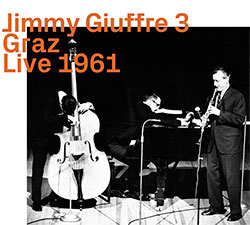
After introducing his new trio with pianist Paul Bley and double bassist Steve Swallow in two 1961 albums on Verve, clarinetist Jimmy Giuffre embarked on a tour of Europe, this recently discovered, well-recorded concert in Graf, Austria the perfect example of his unique concepts yielding intensely focused, harmonically challenging, rhythmically abstract, and exquisite chamber jazz.
In Stock
Quantity in Basket: None
Log In to use our Wish List
Shipping Weight: 3.00 units
EU & UK Customers:
Discogs.com can handle your VAT payments
So please order through Discogs
Sample The Album:
Jimmy Giuffre-clarinet
Paul Bley-piano
Steve Swallow-double bass
Click an artist name above to see in-stock items for that artist.
UPC: 752156100126
Label: ezz-thetics by Hat Hut Records Ltd
Catalog ID: ezz-thetics 1001
Squidco Product Code: 27400
Format: CD
Condition: New
Released: 2019
Country: Switzerland
Packaging: Cardboard Gatefold
Recorded live in Graf, Austria, on October 27th, 1961, by ORF Graz.
"1961 was a breakthrough year for Jimmy Giuffre, although even he may not have realized it at the time, and, alas, what little critical response there was to his music failed, until decades later, to recognize him as one of the innovators redirecting jazz into new forms of improvised activity.
In March and August, Giuffre recorded sessions for Verve which introduced a new trio - Paul Bley on piano, Steve Swallow on acoustic bass, and with him for the first time concentrating solely on clarinet - producing two albums, Fusion and Thesis. In the Fall the trio embarked on a European tour, where audience reaction was apparently mixed, with many listeners unprepared for such intensely focused, harmonically challenging, rhythmically abstract sounds. It was music far more complex and experimental than his previous trios of the 1950s offered, as may be heard on the two concert recordings which were first issued some thirty-plus years after the fact - Emphasis, from Stuttgart, and Flight, from Bremen (originally on hat Art, both currently available together on Emanem). And now there is this document, a third concert, which confirms what we already knew, and adds some special moments unlike anything heard before.
The reorganization in Giuffre's compositional style and attitude which emerged in the 1961 recordings did not occur in a vacuum, and should be attributed to a gradual evolution, and not a sudden transformation. The new trio was labeled, not unfairly, as "chamber music jazz," and did reflect how the influence of classical music on Giuffre's small group writing had become more prominent throughout the previous decade, ranging from his 1953 "Fugue," included in the album Shelly Manne & His Men, Vol. 1 (Contemporary), to subsequent isolated pieces on his own recordings Four Brothers (Capitol), Tangents in Jazz (Capitol), and The Jimmy Giuffre Clarinet (Atlantic) which featured fully notated arrangements, ambigu- ous harmonic settings, rondos, canons, counterpoint, and a noticeable lack of swing.
By 1961, he came to feel a persistent beat was unnecessary, in fact, inhibiting and intrusive - as was a rigid structure of chords which acted like, in his words, "vertical prisons" for the improviser. His solution was to substitute layers of fluidly adaptable linear melodic development, which he called "slow-motion counterpoint." This concept was at the heart of the new trio, requiring spontaneous contributions from each member, including, as Paul Bley once commented, "individual choice of different [internal] tempi," in addition to freely devised rhythmic responses, an open and varied harmonic environment, and intuitive melodic/intervallic construction. Giuffre proved especially discerning in his choice of Bley and Swallow to accompany him into such uncharted territory; almost immediately they developed a sympathetic, near-telepathic interaction that became even freer and more imaginative with experience, while retaining the coherency and compositional integrity of Giuffre's concept.
Which brings us to the program at hand. There are several compelling reasons for the release of this concert. One is the sheer quality of five of these pieces do not appear on the subsequent live releases. Thus for the first time we can experience the hold-your-breath tension and exquisite poignancy of "Brief Hesitation," the Monkish twists of "Temporarily," and bassist Swallow's heroic exposition in "The Gamut." This performance of the notated "Suite for Germany (Stretching Out)" allows us to more fully gauge its classical influences. And with added familiarity we can better appreciate the lyricism and dramatic gestures that intensify this music. But most importantly, this is an extremely valuable historical artefact, like the discovery of an unknown the music. Although this Graz performance predates the Stuttgart and Bremen recordings, the trio is fully prepared, alert to the extended possibilities of the individual pieces (although all but two were drawn from the studio recordings earlier that year, they are transformed by the spontaneous processes Giuffre initiated), and, as the opening version of Carla Bley's "Ictus" shows, they are exhilarated by the shifting perspectives, the discipline of control and the candor of chaos. Another benefit is that Beethoven piano sonata or a cache of unpublished Marianne Moore poems. It adds to our knowledge of three significant artists, and shows that artistry can survive the neglect of time and circumstance, if it is shared and celebrated."-Art Lange, Chicago, March 2017

The Squid's Ear!
Artist Biographies
• Show Bio for Jimmy Giuffre "James Peter "Jimmy" Giuffre; April 26, 1921 Ð April 24, 2008) was an American jazz clarinetist, saxophonist, composer, and arranger. He is notable for his development of forms of jazz which allowed for free interplay between the musicians, anticipating forms of free improvisation. Born in Dallas, Texas, Giuffre was a graduate of Dallas Technical High School and North Texas State Teachers College (University of North Texas College of Music). He first became known as an arranger for Woody Herman's big band, for which he wrote "Four Brothers" (1947). He would continue to write creative, unusual arrangements throughout his career. He was a central figure in West Coast jazz and cool jazz. He became a member of Howard Rumsey's Lighthouse All Stars in 1951 as a full-time All Star along with Shorty Rogers and Shelly Manne. The Lighthouse in Hermosa Beach, California became the focal point of West Coast jazz in the 1952/1953 time period. It was during this time when he collaborated with Rogers on many of the successful charts written for the All Stars. The first recording released by the Lighthouse All Stars was a not so West Coast jazz chart named "Big Boy" which he and Rogers had put together. It was an instant hit in Los Angeles. He left the band in September 1953 and became a member of Shorty Rogers and His Giants before going solo. At this point in his career, Giuffre predominantly played tenor and baritone saxophone. His first trio consisted of Giuffre, guitarist Jim Hall and double bassist Ralph Pe–a (later replaced by Jim Atlas). They had a minor hit in 1957 when Giuffre's "The Train and the River" was featured on the television special The Sound of Jazz. This trio explored what Giuffre dubbed "blues-based folk jazz". This same special matched Giuffre with fellow clarinetist Pee Wee Russell for a leisurely jam session simply titled "Blues". When Atlas left the trio, Giuffre replaced him with valve trombonist Bob Brookmeyer. This unusual instrumentation was partly inspired by Aaron Copland. The group can be seen performing "The Train and the River" in the film Jazz on a Summer's Day filmed at the 1958 Newport Jazz Festival. In 1959, Giuffre led a trio featuring Hall and bassist Buddy Clark on a concert in Rome, Italy, sharing the bill with Gerry Mulligan's band. In 1961, Giuffre formed a new trio with piano player Paul Bley and Steve Swallow on double bass, and also began to focus his attention largely on the clarinet. This group received little attention while active, but were later cited by some critics, fans and musicians as among the most important groups in jazz history. They explored free jazz not in the loud, aggressive mode of Albert Ayler or Archie Shepp, but with a hushed, quiet focus more resembling chamber music. The trio's explorations of melody, harmony and rhythm are still as striking and radical as any in jazz. Thom Jurek has written that this trio's recordings are "one of the most essential documents regarding the other side of early-'60s jazz." Giuffre, Bley and Swallow eventually explored wholly improvised music, several years ahead of the free improvisation boom in Europe. Jurek writes that Free Fall, their final record, "was such radical music, no one, literally no one, was ready for it and the group disbanded shortly thereafter on a night when they made only 35 cents apiece for a set." In the early 1970s, Giuffre formed a new trio with bassist Kiyoshi Tokunaga and drummer Randy Kaye. Giuffre added instruments including bass flute and soprano saxophone to his arsenal. A later group included Pete Levin playing synthesizer and replaced Tokunaga with electric bassist Bob Nieske. This group recorded three albums for the Italian Soul Note label. During the 1970s, Giuffre was hired by New York University to head its jazz ensemble, and to teach private lessons in saxophone and music composition. Into the 1990s, Giuffre continued teaching and performing. He recorded with Joe McPhee, and revived the trio with Bley and Swallow (though Swallow had switched to bass guitar, giving the group a different sound). Through the mid-1990s Giuffre taught at the New England Conservatory of Music. He suffered from Parkinson's Disease and in his last years he no longer performed. Giuffre died of pneumonia in Pittsfield, Massachusetts, on April 24, 2008, two days short of his 87th birthday." ^ Hide Bio for Jimmy Giuffre • Show Bio for Paul Bley "Hyman Paul Bley, CM (November 10, 1932 - January 3, 2016) was a Canadian pianist known for his contributions to the free jazz movement of the 1960s as well as his innovations and influence on trio playing and his early live performance on the Moog and Arp audio synthesizers. Bley was a long-time resident of the United States. His music has been described by Ben Ratliff of the New York Times as "deeply original and aesthetically aggressive." Bley's prolific output includes influential recordings from the 1950s through to his solo piano records of the 2000s. Bley was born in Montreal, Quebec, on November 10, 1932. His adoptive parents were Betty Marcovitch, an immigrant from Romania, and Joe Bley, owner of an embroidery factory. However, in 1993 a relative from the New York branch of the Bley family walked into Sweet Basil in NYC and informed him that his father was actually his biological parent. At age five Bley studied violin, but at age seven he decided to switch to the piano. By eleven he received a junior diploma from the McGill Conservatory in Montreal. At thirteen he formed a band which played at summer resorts in Ste. Agathe, Quebec. As a teenager he played with touring American bands, including Al Cowan's Tramp Band. In 1949, when Bley was starting his senior year of high school, Oscar Peterson asked Bley to fulfill his contract at the Alberta Lounge in Montreal. The next year Bley left Montreal for New York City and Julliard. In the 1951, on a return trip to Montreal, Bley organized the Jazz Workshop with a group of Montreal musicians. In 1953 Bley invited the bebop alto saxophonist and composer Charlie Parker to the Jazz Workshop, where he played and recorded with him. When Bley returned to New York City he hired Jackie McLean, Al Levitt and Doug Watkins to play an extended gig at the Copa City on Long Island. In 1953 the Shaw Agency booked Bley and his trio to tour with Lester Young, billed as "Lester Young and the Paul Bley Trio" in ads. He also performed with tenor saxophonist Ben Webster at that time. He then conducted for bassist Charles Mingus on the Charles Mingus and His Orchestra album. Additionally, in 1953, Mingus produced the Introducing Paul Bley album for his label, Debut Records with Mingus on bass and drummer Art Blakey . (In 1960 Bley recorded again with the Charles Mingus Group.) In 1954 Bley received a call from Chet Baker inviting him to play opposite Baker's quintet at Jazz City in Hollywood, California for the month of March. This was followed by a tour with singer Dakota Staton. Down Beat Magazine interviewed Bley for its July 13, 1955 issue. The prescient title of the article read, "PAUL BLEY, Jazz Is Just About Ready For Another Revolution." The article, reprinted in Down Beat's 50th Anniversary edition, quoted Bley as saying, "I'd like to write longer forms, I'd like to write music without a chordal center." Bley's trio with Hal Gaylor and Lennie McBrowne toured across the US in 1956, including a club in Juarez. Mexico. The tour culminated with an invitation to play a 1956 New Year's Eve gig at Lucile Ball and Desi Arnez's home in Palm Springs. During the evening, Bley collapsed on the bandstand with a bleeding ulcer and Lucy immediately took him to the Palm Springs hospital where she proceeded to pay for all of his medical care. Bley, who had met Karen Borg while she was working as a cigarette girl at Birdland in NYC, married her after she came out to meet him in Los Angeles, where she became Carla Bley. In 1957 Bley stayed in Los Angeles where he had the house band at the Hillcrest Club. By 1958 the original band, with vibe player, Dave Pike, evolved into a quintet with Bley hiring young avant garde musicians trumpet player Don Cherry, alto saxophonist Ornette Coleman, bassist Charlie Haden and drummer Billy Higgins. In the early 1960s Bley was part of "The Jimmy Giuffre 3," with Giuffre on reeds, and Steve Swallow on bass. Its repertoire included compositions by Giuffre, Bley and his now ex-wife, composer Carla Bley. The group's music moved towards chamber jazz and free jazz. The 1961 European tour of The Giuffre 3 shocked a public expecting Bebop, however the many recordings released from this tour have proven to be classics of free jazz. During the same period, Bley was touring and recording with tenor saxophonist Sonny Rollins, which culminated with the RCA Victor album Sonny Meets Hawk! with tenor saxophonist Coleman Hawkins. Bley's solo on "All The Things You Are" from this album has been called "the shot heard around the world" by Pat Metheny. In 1964 Bley was instrumental in the formation of the Jazz Composers Guild, a co-operative organization which brought together many free jazz musicians in New York: Roswell Rudd, Cecil Taylor, Archie Shepp, Carla Bley, Michael Mantler, Sun Ra, and others. The guild organized weekly concerts and created a forum for the "October Revolution" of 1964. In the late 1960s, Bley pioneered the use of the Arp and Moog synthesizers, performing live before an audience for the first time at Philharmonic Hall in New York City on December 26, 1969. This "Bley-Peacock Synthesizer Show" performance, a group with singer/composer Annette Peacock, who had written much of his personal repertoire since 1964, was followed by her playing on the recordings Dual Unity (credited to "Annette & Paul Bley") and Improvisie. The latter was a French release of two extended improvisational tracks with Bley on synthesizers, Peacock's voice and keyboards, and percussion by Dutch free jazz drummer Han Bennink, who had also appeared on part of Dual Unity. [biography continues...]" ^ Hide Bio for Paul Bley • Show Bio for Steve Swallow "Steve Swallow has long been many jazz critics' favorite electric bassist: rather than playing his instrument in a rock-oriented manner, Swallow emphasizes the high notes and, to an extent, approaches the electric bass as if it were a guitar. He originally started on piano and trumpet before settling on the acoustic bass as a teenager. Swallow joined the Paul Bley trio in 1960 and with Bley was part of an avant-garde version of the Jimmy Giuffre 3 during 1960-1962. Swallow recorded with George Russell and was a member of Art Farmer's quartet (1962-1965), Stan Getz's band (1965-1967), and an important edition of Gary Burton's quartet (1967-1970). The latter group (starting with the addition of guitarist Larry Coryell) was actually one of the first fusion groups, and it was during that time that Swallow began playing electric bass; within a few years, he stopped playing acoustic altogether. Swallow spent a few years in the early '70s living in northern California, during which time he mostly played locally. After the late '70s, he was closely associated with Carla Bley's groups, although he occasionally worked on other projects (including a reunion of the Jimmy Giuffre 3). Swallow has also proved to be a talented composer with "Eiderdown," "Falling Grace," "General Mojo's Well Laid Plan," and "Hotel Hello" among his better-known pieces. The 21st century saw the release of several Swallow sets, including Damaged in Transit (2003), Histoire Du Clochard: The Bum's Tale (2004), and an intriguing set with poet Robert Creeley, So There (2006). Hotel Hello appeared in 2007, followed by Believe in Spring, a collection of standards with Hans Ulrik and Jonas Johansen issued on the Stunt label, and Carla's Christmas Carols in 2008. In 2010, he recorded IS with trumpeter Tore Johanson for the Inner Ear label. Swallow formed We3 along with Adam Nussbaum and David Leibman; they recorded Amazing in 2011. In 2012, he and drummer Joey Barron played in Steve Kuhn's trio for the recording of Wisteria on ECM. It was a busy year for the bassist: he also recorded another duet offering, The Agnostic Chant Book, with reed and woodwind master Jonas Schoen. He led his own quintet for Into the Woodwork, which was issued on Xtra WATT, in June of 2013, and shared triple-billing with Carla Bley and Andy Sheppard on Trios, which was released in September of that year. In 2016, Swallow once again joined Bley and Sheppard for Andando el Tiempo." ^ Hide Bio for Steve Swallow
6/25/2025
Have a better biography or biography source? Please Contact Us so that we can update this biography.
6/25/2025
Have a better biography or biography source? Please Contact Us so that we can update this biography.
6/25/2025
Have a better biography or biography source? Please Contact Us so that we can update this biography.
Track Listing:
1. Ictus 3:02
2. Brief Hestistation 4:35
3. The Gamut 5:16
4. Suite For Germany 12:10
5. Trance 7:10
6. Cry, Want 10:08
7. Carla 7:00
8. Whirrr 5:30
9. Temporarily 5:23
10. Scootin' About 7:06
11. That's True, That's True 7:58
Hat Art
Improvised Music
Jazz
Free Improvisation
West Coast/Pacific US Jazz
Recordings by or featuring Reed & Wind Players
Trio Recordings
Staff Picks & Recommended Items
Top Sellers for 2019 by Customer Sales
Chamber Jazz
Search for other titles on the label:
ezz-thetics by Hat Hut Records Ltd.

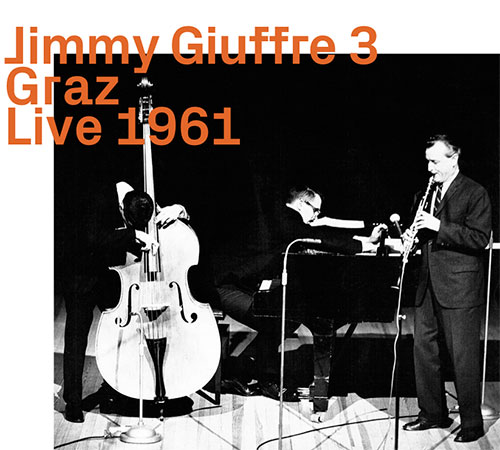
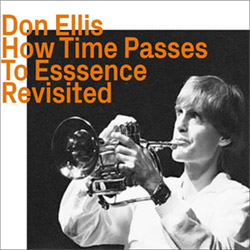

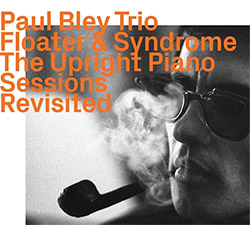
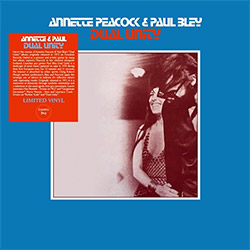
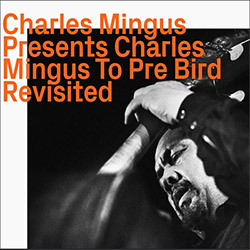







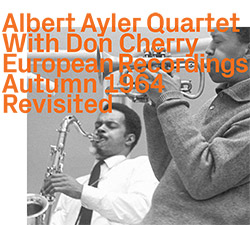

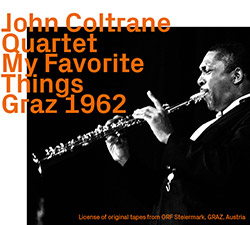
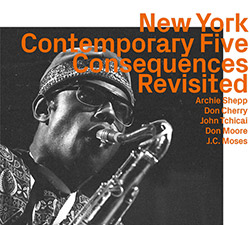

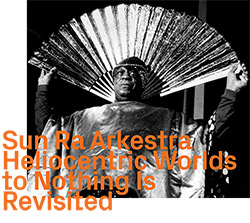
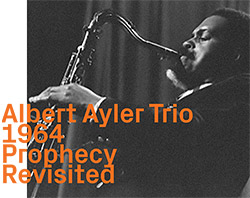
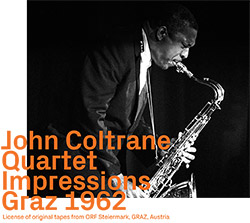




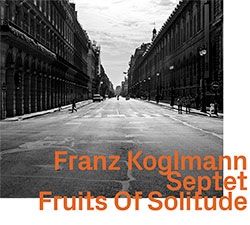




![Eternities: Rides Again [CASSETTE]](https://www.teuthida.com/productImages/misc4/36247.jpg)

![Lopez, Francisco: Untitled (2021-2022) [2 CDs]](https://www.teuthida.com/productImages/misc4/36438.jpg)


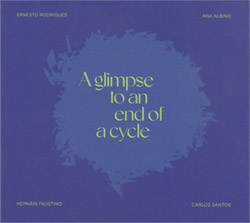

![Eventless Plot | Haarvol: The Subliminal Paths [CASSETTE + DOWNLOAD]](https://www.teuthida.com/productImages/misc4/36232.jpg)
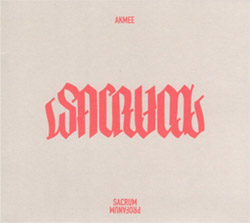




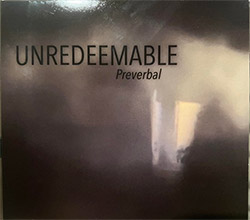
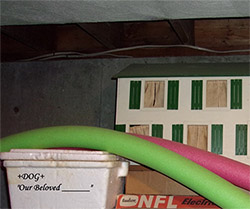


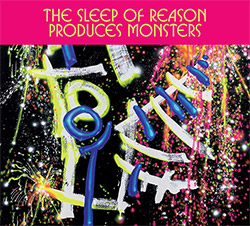


![Eventless Plot | Francesco Covarino: Methexis [CASSETTE + DOWNLOAD]](https://www.teuthida.com/productImages/misc4/36231.jpg)
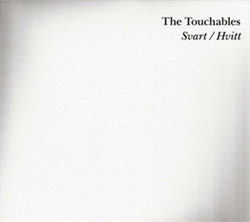
![Brown, Dan / Dan Reynolds: Live At The Grange Hall [unauthorized][CASSETTE]](https://www.teuthida.com/productImages/misc4/36245.jpg)




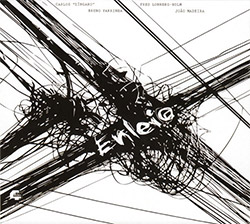
![Das B (Mazen Kerbaj / Mike Majkowski / Magda Mayas / Tony Buck): Love [VINYL]](https://www.teuthida.com/productImages/misc4/36329.jpg)

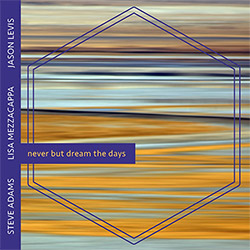
![Hemphill Stringtet, The: Plays the Music of Julius Hemphill [VINYL]](https://www.teuthida.com/productImages/misc4/36409.jpg)


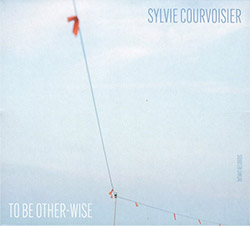
![Halvorson, Mary Septet: Illusionary Sea [2 LPS]](https://www.teuthida.com/productImages/misc4/17952.jpg)
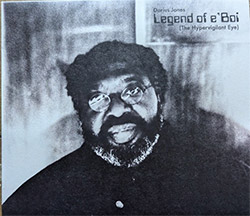

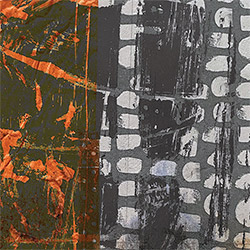
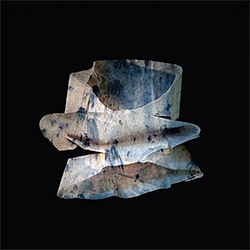
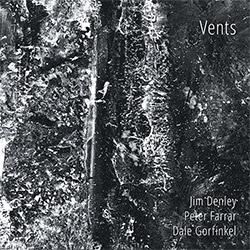
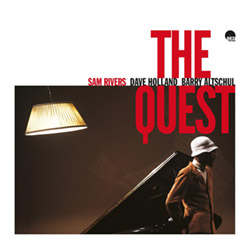
![Re-Ghoster Extended: The Zebra Paradox [VINYL]](https://www.teuthida.com/productImages/misc4/36204.jpg)
![FDF Trio: Possibility And Prejudices From Within A Cup [VINYL]](https://www.teuthida.com/productImages/misc4/36205.jpg)
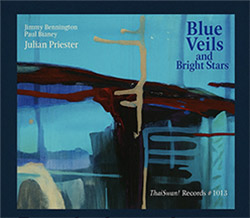

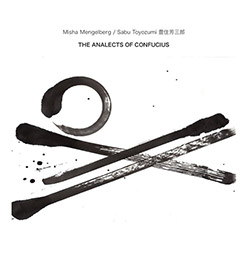

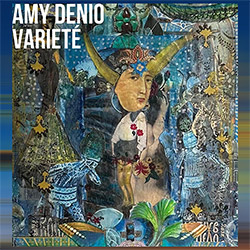

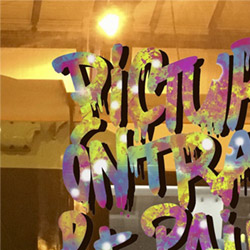

![Money : Money 2 [2 CDs]](https://www.teuthida.com/productImages/misc4/35894.jpg)
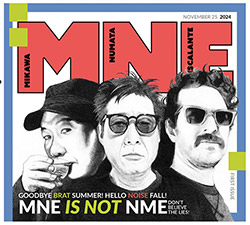
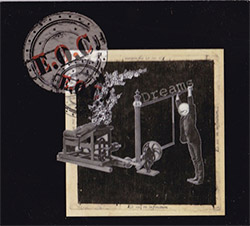


![Klinga, Erik: Elusive Shimmer [VINYL]](https://www.teuthida.com/productImages/misc4/36258.jpg)
![CHANGES TO blind (Phil Zampino): Volume 9 - I Wave on a Fine Vile Mist [CD + DOWNLOAD]](https://www.teuthida.com/productImages/misc4/36061.jpg)

![Wallmart / Rubbish: Asset Protection [split CD]](https://www.teuthida.com/productImages/misc4/35900.jpg)


![+Dog+: The Family Music Book Vol. 5 [2 CDs]](https://www.teuthida.com/productImages/misc4/35897.jpg)
![Kuvveti, Deli : Kuslar Soyledi [CASSETTE w/ DOWNLOAD]](https://www.teuthida.com/productImages/misc4/36107.jpg)

![Nakayama, Tetsuya: Edo Wan [CASSETTE w/ DOWNLOAD]](https://www.teuthida.com/productImages/misc4/36105.jpg)
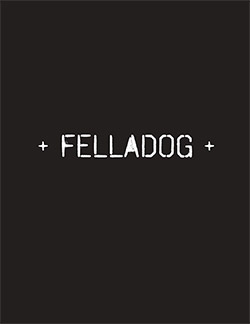

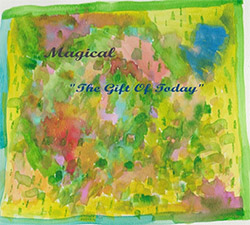

![Yiyuan, Liang / Li Daiguo: Sonic Talismans [VINYL]](https://www.teuthida.com/productImages/misc4/35957.jpg)

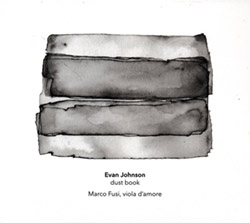


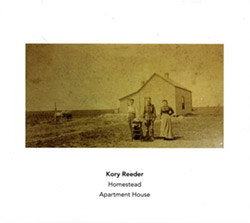
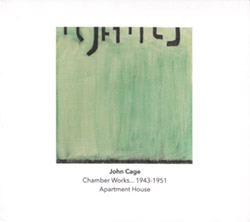
![Palestine, Charlemagne / Seppe Gebruers: Beyondddddd The Notessssss [VINYL]](https://www.teuthida.com/productImages/misc4/36206.jpg)
![Palestine, Charlemagne / Seppe Gebruers: Beyondddddd The Notessssss [NEON GREEN VINYL]](https://www.teuthida.com/productImages/misc4/36207.jpg)

![Laubrock, Ingrid: Purposing The Air [2 CDs]](https://www.teuthida.com/productImages/misc4/35639.jpg)
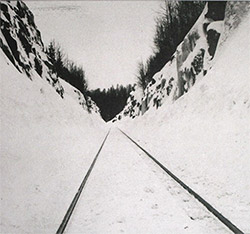
![Yoko, Ono / The Great Learning Orchestra: Selected Recordings From Grapefruit [2 CDs]](https://www.teuthida.com/productImages/misc4/35841.jpg)









![Zorn, John / JACK Quartet: The Complete String Quartets [2 CDs]](https://www.teuthida.com/productImages/misc4/35609.jpg)

![Lonsdale, Eden: Dawnings [2 CDs]](https://www.teuthida.com/productImages/misc4/35480.jpg)



![Sorry For Laughing (G. Whitlow / M. Bates / Dave-Id / E. Ka-Spel): Rain Flowers [2 CDS]](https://www.teuthida.com/productImages/misc4/35985.jpg)

![Rolando, Tommaso / Andy Moor : Biscotti [CASSETTE w/ DOWNLOADS]](https://www.teuthida.com/productImages/misc4/36106.jpg)


![Electric Bird Noise / Derek Roddy: 8-10-22 [CD EP]](https://www.teuthida.com/productImages/misc4/35970.jpg)








![Elephant9 : Mythical River [VINYL]](https://www.teuthida.com/productImages/misc4/34624.jpg)



![Elephant9 with Terje Rypdal: Catching Fire [VINYL 2 LPs]](https://www.teuthida.com/productImages/misc4/35355.jpg)
![Deerlady (Obomsawin, Mali / Magdalena Abrego): Greatest Hits [VINYL]](https://www.teuthida.com/productImages/misc4/34876.jpg)







![Surplus 1980: Illusion of Consistency [CD]](https://www.teuthida.com/productImages/misc4/35069.jpg)
![Staiano, Moe: Away Towards the Light [VINYL + DOWNLOAD]](https://www.teuthida.com/productImages/misc4/35037.jpg)
![Coley, Byron: Dating Tips for Touring Bands [VINYL]](https://www.teuthida.com/productImages/misc4/17906.jpg)

![Lost Kisses: My Life is Sad & Funny [DVD]](https://www.teuthida.com/productImages/misc4/lostKissesDVD.jpg)